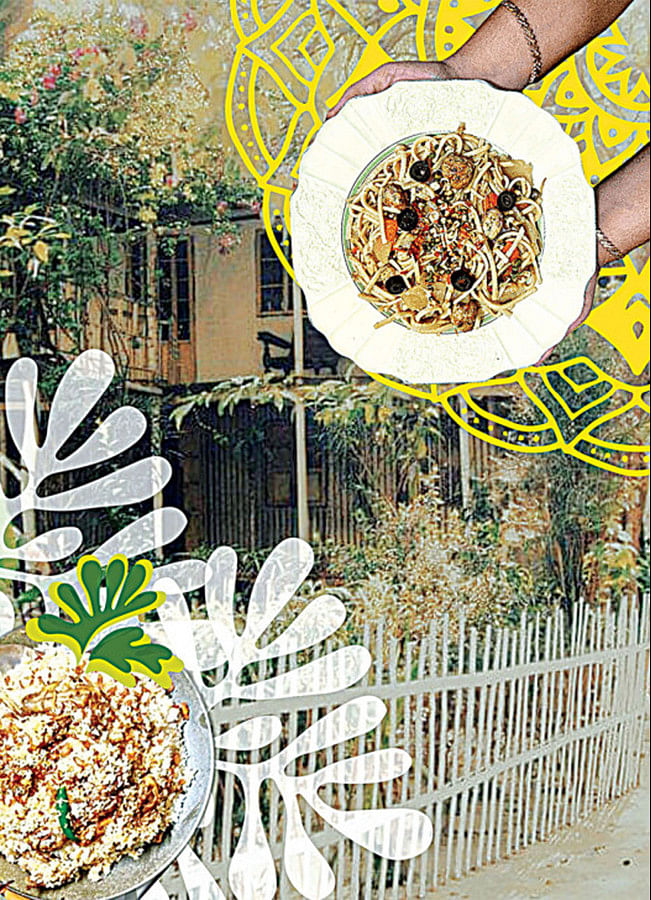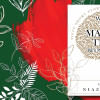The matriarchy of food

It is a truth universally acknowledged that food is the undisputed sixth love language that Gary Chapman forgot to mention in his 1992 book. Or maybe it's just the gastronome in me speaking.
As a Bangladeshi though, one must attest to how one's parents use food as a tool for the communication of a love that they otherwise suppress beneath crackling layers of high expectations and steadfast rules. I know this because I have seen this phenomenon memed to no end in Facebook groups like Subtle Curry Traits and tumblr posts from 2016; because my friends from university and I had bonded over stories of how our mothers scolded us about getting fat and then apologised in the form of our favourite dish served for the next meal; because students in my Literature classes tell me similar stories of grandmothers greeting them with their favourite foods spilling over from the dining tables; because a friend recently posted on Facebook "How do I explain to my brown mom that she is overfeeding our cat?" and I could very much relate it with how my mother literally spoon-feeds freshly boiled chicken to our cat, Mochi, and runs after him with that spoon when he displays reluctance towards eating.
In all this, I find it very significant to note how the Bangladeshi mother uses the language of food in a way that is, stereotypically, so different from the fathers'. South Asian fathers are famous for outsourcing their expression of love to nature as they bring fruits home and encourage everyone to have some as they list out the nutritional benefits. For our mothers, on the other hand, food is a domain they rule with generations of inherited skill, sharpened with the incessant blades of experience, unpaid labor, and a socialised sense of duty—all of which they take and simmer down to aromatic flavours of love.
My mother, on her maternal side, comes from a long lineage of women who are known far and wide for their culinary skills and fondness for feeding people. Her maa-khala are daughters of the Khan-bari in Manikganj's Dashora area, famous for hosting feasts on any and all Islamic occasions throughout the 50's to 70's, where they cooked for hundreds of town-dwellers. My nanu, Ms Hafsa Khanam, 71, showcased her skills acquired from the Khan-bari feasts to entertain guests from all over the world when they visited her workplace at Bharateswari Homes. Her sister, Hippolyta (yes, named after the Shakespeare heroine), extended those skills towards furthering her status as a socialite amongst those in her political, literary, and social spheres. For the Khan-bari women, food became a part of their familial and personal identity, birthing such monikers as "Khane-wala-bari" that still get thrown around in conversations of acquaintances reminiscing their heydays. Even after her passing, her exceptional skill in cooking Mughal dishes to buttery perfection remains Hipu nanu's legacy throughout the recollection of relatives, close and distant alike. As for my nanu, her cakes and puff pastries remain synonymous with her name among her colleagues and superlatives, long after she retired.
Now, when my mother was sent to the kitchen to cook her first meal at her in-law's, she knew she had to follow down the path of some massive footprints. To put things in perspective, I think the equivalent of that for me, as a writer, would be if I were a descendent of Virginia Woolf. I reiterate: massive shoes to fill!
However, my mother has not only worn those shoes and ran miles in them, but she has worn them out and outgrown them too. This might be the words of a biased daughter, but I have borne witness, closer than anyone has, to how poetically ammu has bent and remoulded her language of love to create her own identity alongside the Khan-bari hall of fame, with her own innovation on dishes from deshi-bideshi cuisines alike. The kitchen is her studio, and her patishapta, kacchi biryani, shawarma, et cetera, are the varied artworks she puts out into the world—bringing her acclaim amongst anyone who has ever had the fortune to experience her hospitality, whether as surprise guests at home or as my colleagues on potlucks.
But if we call back to that first showdown with the fire on a stove, my mother had barely left that ring unscathed, having made polau with every masala she could find on the shelves. She did not have any recipe books to follow that might have been passed down over the generations in the family. Whatever recipes the women of Khan-bari ever replicated from the elders came in the form of folktales passed down as word of mouth, with one's own imagination taking away and adding elements to these culinary tales as they pleased. And when any recipe with scribbled measurements were ever doled out to an outsider who bore no relation to this lineage, they came back saying, "I followed all the instructions but it came out nothing like yours!"
Some few months ago I had shown my mother an Instagram reel from the comedian Zarna Garg, ranting about the young generation always asking for the recipe and not using their "common sense" and then another video from local TikTok star, Emily in Dhaka, talking about how when she asked her mother-in-law for the recipe of dudh-cha, she was simply told something along the lines of, "You put tea leaves in the water and boil until there is colour and then you put milk and boil until the colour is right." Now, in my amateur opinion, she had every right to be perplexed by those instructions, but as my Bangali maa would argue, echoing the thoughts of Garg and Ms. Emily's MIL: you use your common sense; you feel what you cook and then you just know when it's right. And I believe this is where the beauty of Bangladeshi cuisine, and food itself, lies—it is an effortlessly intersectional form of art that culminates from the various personality traits and characterising identities defined by its maker's national identity, socioeconomic status, financial stability, geographical setting, as well as the climate and political conditions where they live.
So the fact that the Bangladeshi household runs on a matriarchy of food is endlessly fascinating to me. Here, as the men venture outside to uphold their Jenga tower of patriarchy at the altars of their corporate temples, the housewives rule their own turf inside the home. Making commands under the guise of grocery lists, they manoeuvre the temperamental landscape at home. Thus, these women discreetly dictate the very thing that the capitalist slaves among us serve to earn under the pestle of patriarchy: food, with its myriads of creative and loving expression.
Tashfia Ahmed is a writer and poet who teaches English at Scholastica School.

 For all latest news, follow The Daily Star's Google News channel.
For all latest news, follow The Daily Star's Google News channel. 









Comments